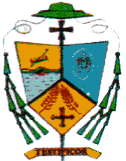The Catholic Bishops' Conference of the Philippines
The Official Website of
CBCP Online

In 1902, Gregorio Aglipay of the Iglesia Filipina Independiente came to Antique to persuade the Filipino clergy to join him. And many did. Most parishes came to be in the hands of Aglipayans. In 1908 the Supreme Court of the United States ruled that church properties occupied by the Aglipayans be returned to the Church. This was a boost for the Catholic Church in Antique.
Between 1939 and 1958 more parishes were opened. At present a majority of the population, 68 per cent, are Catholics. The rest are Protestants, Aglipayans, Iglesia ni Kristos, Buddhists, Moslems and others who are non-denominational. Today there are 24 parishes and 1 chaplaincy, manned by 27 diocesan priests and 12 religious priests. There are 7 religious brothers and 86 religious sisters including pre-schools, elementary, high schools, and 2 pastoral centers. 17 parishes already have organized Basic Ecclesial Communities.
Bishop Raul Q. Martirez convoked the first Diocesan Synod in 1987, to coincide with the celebration of the silver jubilee of the diocese. From that time the pastoral programs of the diocese have been involved with concerns relative to that Synod and the Second Plenary Council of the Philippines of 1991. Great importance is being given to pastoral work, education, catechetical work, liturgy and socio-economic programs.
The Prelature of San Jose de Antique was erected in 1962, deriving its territory from the Archdiocese of Jaro. Its ecclesiastical boundaries coincide with those of the civil province of Antique. Monsignor Cornelio de Wit was its first prelate. In 1983 Father Raul Q. Martirez was appointed Bishop of Antique to succeed Monsignor de Wit. Just before that the prelature was raised to the rank of diocese.
Antique, one of four provinces comprising the island of Panay is a narrow slice of land on the entire western coast of the island. It is bounded on the north by Aklan, on the east by Capiz and Iloilo, on the south by Panay Gulf and on the west by the Cuyo Pass.
There are 18 municipalities, most of which are located along the long coastline. Topography is dominated by high mountaines, with those in the north rising to over 2,000 meters. The capital of the province is San Jose de Buenavista, a port town in the South.
Fishing is a major source of income, the waters being a rich fishing ground for tuna, anchovy and other salt-water fish. And scattered around the province are untapped deposits of copper, chromite, manganese, gold and silver. However, only coal is being mined on the island of Semirara. Socio-economic development has been slow, so many emigrate elsewhere as subsistence levels remain below the poverty line.
Historically the island of Panay is remembered as the place where Datu Sumakwel, a datu from Borneo, settled in the thirteenth century. He called the whole island Hamtik, after the name of large ants found in the island. And this remained so until the coming of the Spaniards who called it Antique, a distortion of its former name.
In the sixteenth century the Spaniards arrived on the island of Panay. And with the arrival of civil Spanish authority arrived the first Catholic missionaries. By the end of the sixteenth century, they had established their first mission in Antique, on the then island of Hamtik . Other missions followed through the seventeenth century.
The supervision of these missions, however, was intermittent. But by the eighteenth century the situation improved when Antique was declared a separate province by the Spanish government in 1798. From 1733 to 1793 eight new missions were opened. At this time Antique still came under the See of Cebu. In 1865 the Diocese of Jaro was erected and Antique became part of that diocese.
|
Diocesan Curia |
|
Clergy |
|
Parishes |
|
Educational Center |
|
Institutions |
|
Statistics |

Diocese of San Jose, Antique

